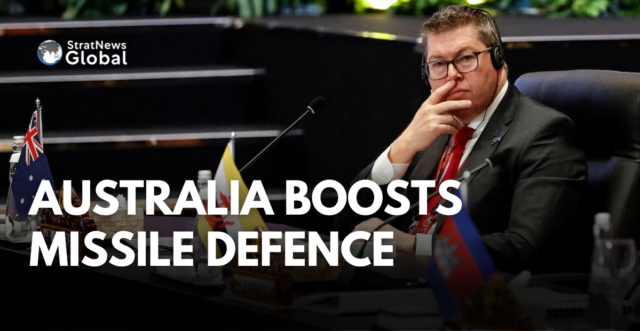Australia announced a major expansion of its missile defence systems and weapons production, citing rising tensions in the Indo-Pacific, particularly following China’s recent intercontinental ballistic missile (ICBM) test in the South Pacific. Defence Industry Minister Pat Conroy outlined the new strategy in Canberra, stating that Australia’s partnerships with the United States, Japan, and South Korea are crucial for stability in the region.
Heightened Missile Defence to Counter Regional Threats
Conroy highlighted that Australia’s growing missile stockpile and strengthened defence capabilities are responses to the increasing strategic competition between the US and China. He explained, “Why do we need more missiles? Strategic competition between the United States and China is a primary feature of Australia’s security environment.” This statement was made following China’s ICBM test in September, which covered 11,000 kilometres, landing in the Pacific northeast of Australia.
In response, Australia has already secured a A$7 billion deal with the US to acquire SM-2 IIIC and SM-6 long-range missiles, providing advanced missile defence for its naval destroyers. Conroy emphasised that “potential adversaries” should understand that any hostile act against Australia “would not succeed” if a conflict were prolonged.
Expansion of Domestic Missile Production
Australia is also ramping up domestic missile and ammunition manufacturing to address potential disruptions in global supply chains. A key part of this plan includes the establishment of local production facilities for the Guided Multiple Launch Rocket Systems (GMLRS) in partnership with Lockheed Martin. Production is expected to begin in 2029, with an annual output capacity of 4,000 GMLRS, or approximately 25% of current global production.
Additionally, France’s Thales will manufacture 155mm M795 artillery rounds in the small Victorian city of Benalla, marking the first dedicated forge of its kind outside the US. With production set to start in 2028, this facility will be capable of producing up to 100,000 rounds per year. This increase in capacity is crucial, Conroy noted, as last year’s war in Ukraine used up to 10,000 rounds of similar artillery shells daily, a rate that exceeded Europe’s production capabilities.
Future Naval Strike and Missile Capabilities
Australia’s missile defence strategy extends beyond immediate deployments, with longer-term plans for enhanced missile manufacturing capabilities in partnership with Norway’s Kongsberg Defence. By 2029, Newcastle will become the only location outside of Norway to produce Naval Strike Missiles and Joint Strike Missiles.
Further expanding Australia’s defensive reach, the navy will soon have Tomahawk missiles capable of striking targets up to 2,500 kilometres away. This addition increases the effective range of Australia’s naval capabilities by tenfold, providing a significant deterrent in the region’s evolving security landscape.
Australia’s investments reflect a larger shift towards self-reliance in defence manufacturing, particularly in missile technology, as concerns grow around the stability of global supply chains. By building and stockpiling these assets at home, Australia aims to ensure that it can meet its own defence needs, supply regional allies, and contribute to the collective security of the Indo-Pacific. Conroy underscored the importance of preparedness, stating, “Australia needs not only to acquire more missiles, but to make more here at home.”
(with inputs from reuters)
Research Associate at StratNewsGlobal, A keen observer of #China and Foreign Affairs. Writer, Weibo Trends, Analyst.
Twitter: @resham_sng





